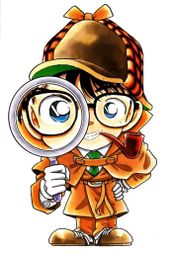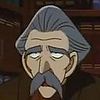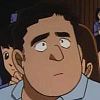Recurring Tropes

|
This page is currently being edited. Please consider helping the users to complete the page and fill in the missing pieces if you are able. |
| Meta Topics |
|---|
 |
| A Doylist perspective on Detective Conan |
| In-Universe Laws |
| Canon |
| Internal rules |
| » Disguise |
| Mistakes and changes |
| Oversights in Detective Conan |
| Differences between the manga and anime |
| Differences between magazine and volume |
| Recurring Patterns |
| Tropes |
| General |
| Setting and recurring locations |
| » Real life models for settings |
| List of timelines |
| In-universe culture |
| Continuity |
| Crossover |
| The Fandom |
| Fanon |
| Fan theories |
All authors, including Gosho, have certain styles and tropes they recycle in their writing. This page is meant to be useful to readers who are still catching up in Detective Conan, so examples which contain specific major arc spoilers should be put in a spoiler box.
Contents
[hide]- 1 Mystery Related Tropes
- 1.1 General
- 1.1.1 Lack of recurring character death
- 1.1.2 Lack of information sharing
- 1.1.3 Illogical and irrational behavior
- 1.1.4 Plot progresses by coincidental encounters instead of chasing leads
- 1.1.5 Important characters for serious plots tend to be attractive/cool and younger, not quirky/plain or middle-aged
- 1.2 Regular Mystery
- 1.2.1 The culprit is most often one of three suspects
- 1.2.2 Most cases are murder cases
- 1.2.3 Murder motives are usually personal
- 1.2.4 Culprits were most often male, but current cases are near even
- 1.2.5 Innocent recurring characters stay innocent in later cases
- 1.2.6 Most case culprits vanish from the story when they are caught
- 1.2.7 Case tricks are often based on gimmicks from science demonstrations and the like (Bourbon arc +)
- 1.3 Kaitou Kid Heist
- 1.4 Arc Mystery
- 1.4.1 Arc mysteries become easier towards their ends
- 1.4.2 Arc suspects include protagonists and antagonists
- 1.4.3 Enemies rarely uncover secret identities
- 1.4.4 Haibara is a sentinel for Black Organization members
- 1.4.5 Misleading dialogue
- 1.4.6 Old arc characters' pasts are sometimes reused in new arc plots
- 1.4.7 Old characters introduced well before an arc starts aren't usually major suspects
- 1.4.8 Minor points of note
- 1.1 General
- 2 Romance Related Tropes
- 3 References
Mystery Related Tropes
Foreknowledge of Gosho's preferred tropes and method of building mysteries gives a reader a significant advantage is solving them.
General
Lack of recurring character death
No recurring character --one who has appeared in person alive for more than one case-- has been killed as of chapter 1054. Any recurring characters who have died did so in their first case and reappeared in flashbacks, were stated to be dead from the outset, or faked their death.
Lack of information sharing
Illogical and irrational behavior
Plot progresses by coincidental encounters instead of chasing leads
Gosho often progresses through plots with a series of coincidental encounters: situations where Conan happens to be in the right place and time to find a case or something else plot relevant. Conan doesn't spend a lot of time investigating various leads and finding dead ends until one of them pans out. Plot relevant people are also likely to coincidentally appear by chance in cases.
Important characters for serious plots tend to be attractive/cool and younger, not quirky/plain or middle-aged
Important plot characters used for serious storylines tend to be cool or attractive and have more individualized, detailed, and careful designs than the usual suspects which often are plain, quickly drawn, or have appearance quirks such as oddly shaped heads, pronounced teeth, enlarged noses or lips, etc. Characters become less detailed the less often they reoccur, or were originally anticipated to reoccur. Gosho has acknowledged this general principle in at least one interview question.
Q:先生が漫画を描く上で大事なさっていることは?
When sensei draws manga, what do you value?
A:男の子はかっこよく、女の子は可愛くですね。最近は蘭や世良などの女の子もかっこよくなってきちゃいましたけどね(笑)。
To draw cool boys and cute girls. Though Ran and Sera and such girls are becoming cooler these days (laughs).
Most plot important characters, even adults, tend to be young, 30s or lower. Most of the main recurring police have not left their twenties. There are many exceptions as this general trend.
An appearance comparison of people who are relevant and irrelevant
The top row are recurring characters with some relevance to the plot, the bottom row are minor characters who have not reoccurred at all or reoccurred a few times in trivial contexts.
Regular Mystery
Most regular cases (with the first cases being much more variable) are 3-6 chapters long, with the last chapter dedicated to the solution. There are usually 3 primary suspects per case.
The culprit is most often one of three suspects
Typical cases present three primary suspects for consideration. The extreme majority of the time (>95%), the culprit is one of these individuals and not one of the witnesses, investigatory police, bystanders, etc. In cases where the culprit is not one of the three suspects, one of the suspects is typically associated with the crime, as an accomplice for instance.[1]
Most cases are murder cases
About three out every four cases involve a murder.[2] The remainder include kidnappings, robbery, heists, hostage taking, codes, and more benign misunderstandings. Of the major groups that Conan associates with, the Detective boys are the most likely to encounter cases that are not murder (although murder cases are very common for the Detective Boys).
Cases where an apparent murder turns out to be a suicide are relatively rare in Detective Conan (<5%). Accidental death is also fairly rare. However, it is not unusual for a culprit to be motivated by a misunderstanding of a past death, thinking a suicide was a murder for instance.
Murder motives are usually personal
The vast majority of murder motives are usually personal (e.g. a grudge) or to silence a witness. That said, there have been isolated incidences of accidents, would-be-spree murderers, and attempted professional assassination.
Culprits were most often male, but current cases are near even
Mixed gender suspect pools are common, but in both manga and AO cases, the culprits are male ~75% of the time and female ~25% of the time.[3] However, the ratio has shifted considerably over time. A tally of culprits between Volumes 80-90 reveals that the culprit gender ratio is ~3♂:2♀, and is even closer to parity if one-suspect whodunits and story cases with no suspects are removed from consideration.
Innocent recurring characters stay innocent in later cases
Recurring characters may be involved or suspected in cases beyond their introductory ones,[4] but no recurring character found to be innocent in their first case has been the culprit of a serious crime in a later case. The only major exceptions to this rule have been arc suspects who were Black Organization members. This rule doesn't apply when someone is in disguise as a recurring character and commits a crime (e.g. a Kogoro Mouri impersonator).
Most case culprits vanish from the story when they are caught
Virtually all culprits, after being arrested by law enforcement, disappear from the story. Occasionally the sentencing or futures of the more sympathetic culprits are described at the end of the case. Most exceptions to this rule, where the actual culprit reappears or is discussed in a later case, are connected to plot relevant events or major organizations.
Case tricks are often based on gimmicks from science demonstrations and the like (Bourbon arc +)
Starting in the Bourbon arc, case tricks are increasingly often based on gimmicks which have been filmed for science or physics demonstrations, or are parts of sleights of hand used for magic tricks, etc. The crime setup and the suspects are designed to make use of the gimmick. Knowing these factoids or searching for videos of gimmicks based on the circumstances for the crime scene is often useful.
Kaitou Kid Heist
So far Kaitou Kid has not repeated a main disguise in the Detective Conan manga where a significant portion of the case was dedicated to guessing who he was disguised as. Incidental disguises may be repeated. His disguises so far are kept up to date at List of Kaitou Kid disguises.
The major ones where he used a recurring character are:
In movies, these rules don't apply: more than once Kaitou Kid has disguised as Shinichi Kudo and blatantly appeared in front of Conan and the police, although Conan could not claim to be Shinichi himself.
Arc Mystery
An arc mystery usually takes the form of identifying the true allegiances of various mysterious characters that appear over the course of 100-300 chapters. So far they have all started with the introduction of a codenamed Black Organization agent and ended with a clash related to that agent where various allegiances and backstories are revealed. The main arc mysteries so far are the Vermouth arc, the Kir arc, the Bourbon and Akai arc, and the Rum arc. There are several tropes that apply especially to this long mystery subtype.
Arc mysteries become easier towards their ends
In arc mysteries, clues are released so that the mystery becomes easier to solve towards the end of the arc. Clues towards the beginning are often better hidden and require more analysis to interpret correctly. More overt clues and bits of backstory that provide hints appear with increasing frequency nearer to the end of the arc.
Arc suspects include protagonists and antagonists
Arc mysteries usually involve at least one Black Organization member and several other characters who are suspicious but who oppose the Black Organization in some form.
Overly suspicious often equals red herring
Overly suspicious characters are often red herrings on the side of good, while seemingly innocuous characters are more likely to be the opponent. Suspicious protagonist characters prior to their allegiance reveal are often shown lurking and watching from the shadows, asking prying questions, and saying vague mysterious quotes that could be taken as threats. Innocuous antagonists are not shown lurking as often or asking as many questions. Towards the end of an arc, antagonists may begin to act slightly more suspiciously. This coincides with clues becoming easier to identify and interpret.
Lots of spies
Most of the arc mystery suspects who turn out to be protagonists are spies.
Furthermore in every arc, at least one spy in the Black Organization was revealed.
Undercover antagonists often use kindly personas
In contrast to overly suspicious red-herring protagonists who are often presented as menacing, many undercover antagonists so far have appeared as friendly and agreeable characters with few overtly suspicious moments (at first).
Enemies rarely uncover secret identities
Characters who appear to be approaching Conan's or Haibara's true identity are unlikely to be enemies in the end.
Haibara is a sentinel for Black Organization members
Haibara has stated outright that any Black Organization member that recognizes her as a child would surely make it first priority to find out where she lives and attack.[5] So far that has been the case although a direct attack is sometimes delayed while the soon-to-be-attacker takes the time to maneuver into more advantageous circumstances because of inconveniences or conflicts of interest. Conan has also used similar reasoning to deduce that someone who interacted with Haibara probably isn't a Black Organization member.
This information strongly implies that any character who has closely interacted with Ai Haibara cannot be a Black Organization member who both recognizes Shiho as a child and is loyal and without ulterior motive. This rule of thumb has proven useful for ruling out arc mystery suspects who approach Haibara closely at some point. Consider the following examples:
The list of major arc suspects who did approach Ai Haibara closely or demonstrated significant awareness of Ai Haibara yet were not antagonists in the end include:
The list of major arc suspects who were innocent yet did not approach Ai Haibara closely or demonstrated significant awareness of Ai Haibara include:
The list of suspects who turned out to be members of the Black Organization (and were seemingly loyal for at least part of their character development) who did not approach Haibara directly and did not demonstrate significant awareness of her include:
The list of suspects who turned out to be members of the Black Organization (and were seemingly loyal for at least part of their character development) who did approach Ai Haibara closely or demonstrated significant awareness of Ai Haibara include:
Misleading dialogue
Gosho frequently manipulates the reader's sense of suspicion with dialogue that sounds mysterious and threatening, or is misleading without the appropriate context. The technique works well because dialogue is pliable; it is easier to create deceptive dialogue than it is to create deceptive action. Gosho also uses especially shocking or quotable lines towards the end of cases to distract from other more useful clues that might have appeared.
Quotes intended to mislead are relatively easy to identify.
- They often sound poetic.
- They are vague, forcing the reader to make assumptions about the speaker, the subject, or what they are referring to. The goal is to trick the reader into filling in the blanks using the immediate context instead of the true context.
- Sometimes no one is specifically named in the quote, but someone is alluded to via terms like "that person".
- When only one half of a two-sided conversation is shown there may be an attempt to trick the reader into assuming the other half is someone else.
- Sometimes two halves of separate conversations are shown together to imply two characters are contacting each other when they are actually contacting third parties. Such trick conversations have several hallmarks. They almost always take place by voice (phone call) or writing (text). They are vague, and do not contain any of the usual personalization that would clearly indicate who the speaker was speaking to(such as using names). Parts of the conversation and replies are sometimes omitted. Conversation may sound more like a series of monologues than a dialogue.
- They often take the form of a monologue or character thought.
- They sound mysterious or threatening.
- They are restated or repeated by another character[7]. When the two characters with similar lines are a known antagonist and a suspect with unknown allegiance, often the goal is trick the reader into thinking the two are allies or alike.
These sorts of trap quotes are perhaps best countered by simply ignoring them and focusing on other evidence. With a few exceptions, mysterious lines are rarely helpful in figuring out people's allegiances, especially since the actual context of the quote may not be revealed for some time. A character's actions always speak louder than their words.
Old arc characters' pasts are sometimes reused in new arc plots
Some arc characters are relevant for more than their introductory arc. The reason a character is reused has so far always related to something from their past, rather than becoming coincidentally involved in new affairs. Old characters likely to become re-involved have unresolved mysteries or have had connections with current arc characters.
Old characters introduced well before an arc starts aren't usually major suspects
To date, all the significant suspects in arc mysteries were introduced during their arc or just before. When Conan suspects an older character from an earlier arc, the suspicion is usually fleeting or disqualified immediately. Practically speaking, newer characters are the most suspicious.
Minor points of note
- Historically, the inner thoughts of still-unknown mystery characters, protagonists and antagonists alike, have been revealed to the reader at various points.
Romance Related Tropes
Childhood friends become adult romances
The characters who were childhood friends or acquaintances and then started dating as teens and adults include:
- Shinichi Kudo - Ran Mouri
- Heiji Hattori - Kazuha Toyama
- Kogoro Mouri - Eri Kisaki
- Kaito Kuroba - Aoko Nakamori
- Hiroshi Agasa - Fusae Campbell
- Ninzaburo Shiratori - Sumiko Kobayashi
- Kazunobu Chiba - Naeko Miike
- Kansuke Yamato - Yui Uehara
True breakups in the main cast are rare
- Current main cast breakups only include Shuichi Akai/Jodie Starling.
Breakups are fixed when the same couple gets back together
- Separations such as Kogoro Mouri/Eri Kisaki and Yumi Miyamoto/Shukichi Haneda are both in the process of being fixed because both people still find the other attractive.
References
- ^ Usually cases where the suspect is hiding the culprit, e.g. the twins case
- ^ http://forums.dctp.ws/viewtopic.php?f=5&t=3518&start=990#p862055
- ^ I need the name of the person who made this tally and info on how they tabulated and up to what point. "Took awhile, but here's something you requested back in January—a culprit gender tally.
Manga
270 Male, 82 Female
Anime-Only
209 Male, 79 Female - ^ See Yamato and the Woodpecker case in Nagano,
- ^ Paraphrase of a conversation between Ai and Conan when they decide that Hyoue Kuroda probably isn't Rum because he hasn't attacked Agasa's house yet.
- ^ Manga Volume 32, File 10, page 18: "A Stupid Plan"
- ^ "Cool guy": Vermouth, Jodie, and James; "Demon in the Darkness": Gin and Mary





















